Explain Pre-Algebra Using Blockly
by paulware in Circuits > Tools
2960 Views, 45 Favorites, 0 Comments
Explain Pre-Algebra Using Blockly
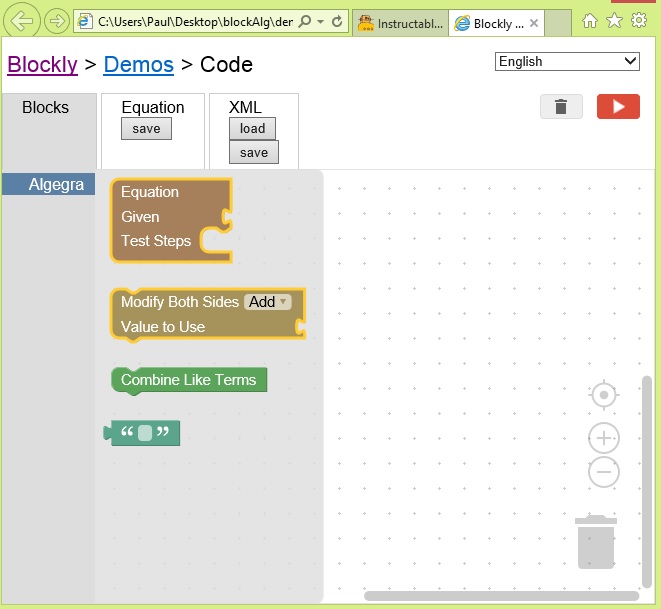
Algebra is one of the first math topics (after fractions) that kids wrestle with.
The problem is that it an abstract concept. You are trying to solve for unknowns (like x). Since they are unknowns kids can't touch them or manipulate them (until now).
Blockly is a perfect solution for abstract concepts. It has been used for scratch, which kids become familiar with in the "Hour of Coding". I have used it for writing Android apps with MIT app inventor. There are many more uses which will appear in the coming years.
You will need Internet Explorer 11.0 (or higher) for this project. IE 11 will allow you to save the diagrams with its built-in javascript FileSystemObject.
To start, unzip the attached .zip file to a directory on your pc and navigate to the demos/code directory. Then open preAlgebra.html using IE 11.
Downloads
Enter the Equation
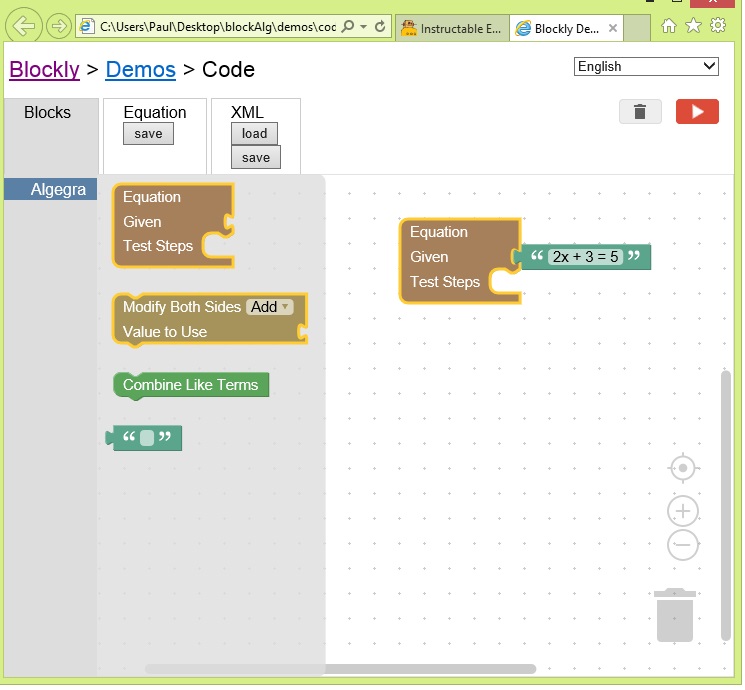
Click on "Algebra" and drag the equation block to the work area.
Then drag a text block to connect to the "Given" piece.
Use x rather then y,z,q or some other variable.
This is a rather limited program and will not help solve for x squared, square root or anything else fancy.
Although if you would like to expand on it, please send me a note: Paulware@hotmail.com.
thanks
Enter a Step
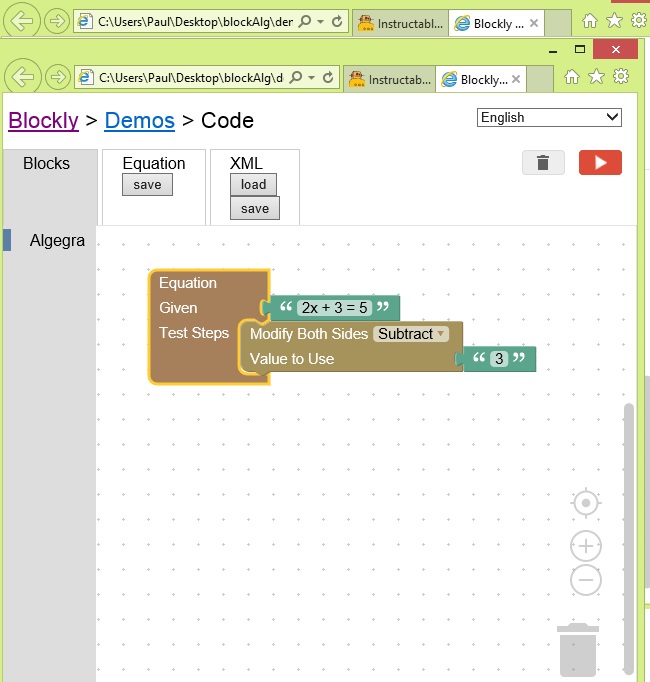
Drag the "Modify Both Sides" block to the work area and place it in the test steps. Change Add to Subtract and drag a text to the value to use connector.
Enter 3 in the text box
Then click on the Equation tab.
You should see:
Given:
2x + 3 = 5
Subtract 3 from both sides:
2x + 3 - 3 = 5 - 3
Combine Like Terms
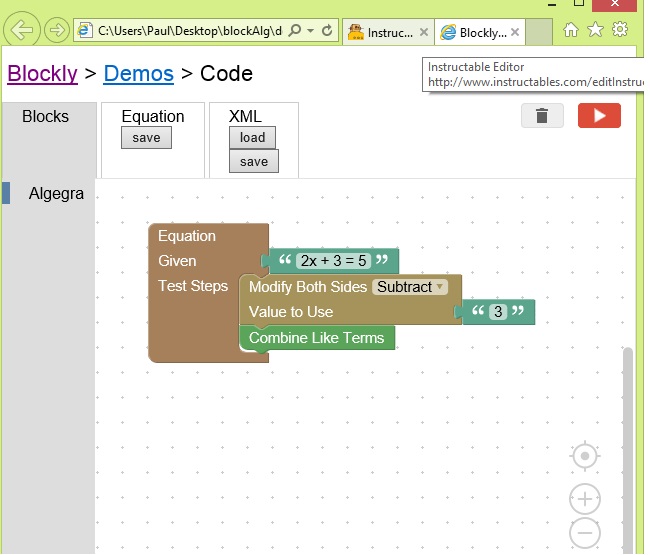
Add the "Combine Like Terms" block to the work area, then click on Equation
You should see:
2x = 2
Add a "Modify both sides" block and change it to:
Divide both sides by 2
Add another "Combine Like Terms" block and click on Equation.
A message will pop up:
"You have solved for x good job!"
And all the steps are shown.
Making Math More Enjoyable
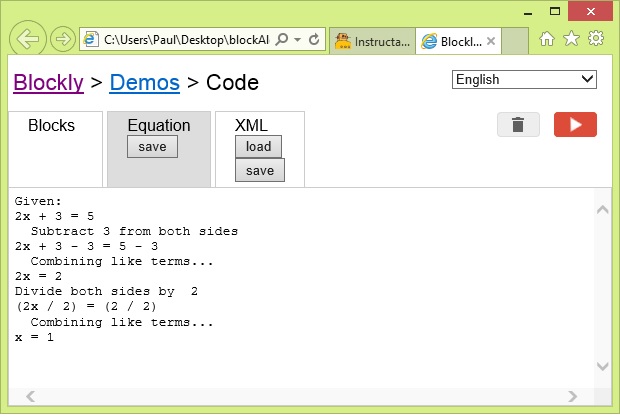
Hopefully this takes some of the "work" out of "homework". My hope is that kids will have fun modifying both sides of the equation.
I believe that this approach could possibly used for calculus or trigonometry. Not sure about probability or geometry.
Thanks for reading. Let me know what you think
Paul